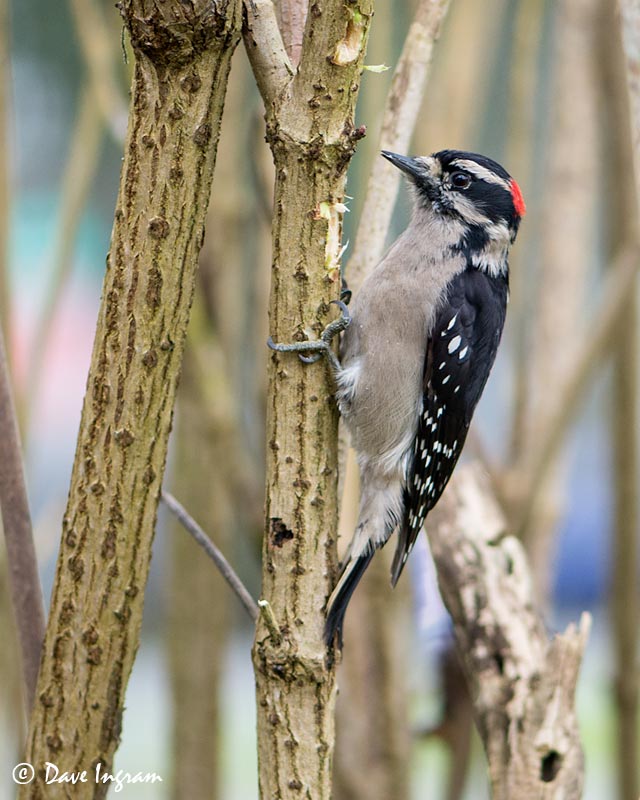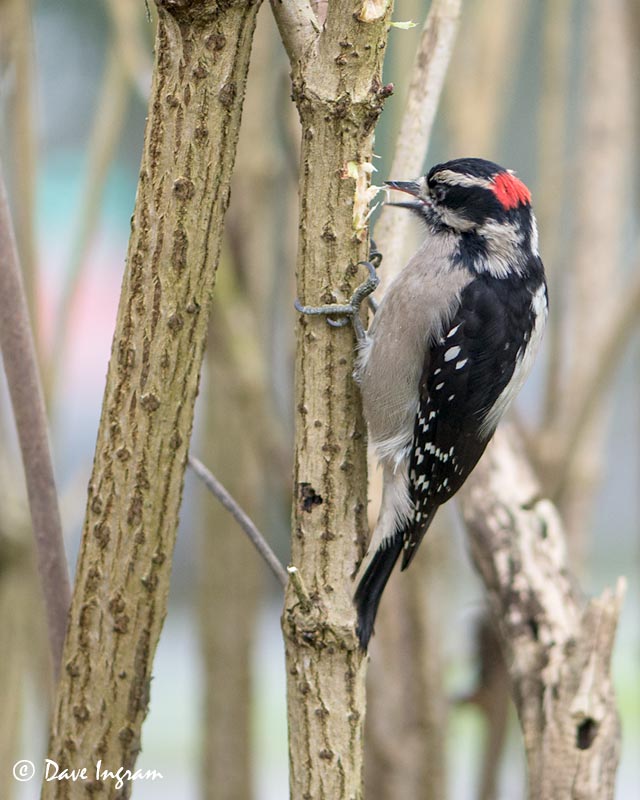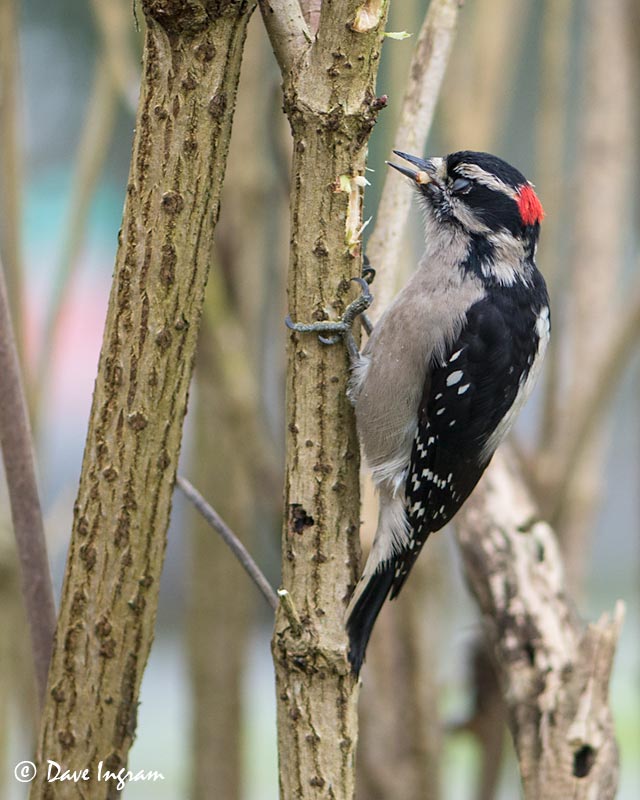Posted by Dave Ingram – Vancouver Island, British Columbia.
We’ve finally got around to putting our suet feeders up for the winter and are starting to enjoy the regulars once again. We’ve been a bit reluctant because of the cat problem on the street- our next door neighbours have an assortment of cats who are active hunters and we didn’t want to set up a feeding station for them. The suet seems to be a good compromise since it doesn’t attract as many of the ground feeders that are the most vulnerable. Don’t get me started about the cat scat problem… yes, we’ve tried everything.
Over the years we’ve had a pair of downy woodpeckers stopping in. I think they’re the same pair, but don’t have any way of knowing for sure. And while they’re attracted to the suet, they also appear to be finding all sorts of things in the domestic elderberry that we have in our yard. The bark of this fast growing shrub is soft and punky, as is the wood, which makes it ideal for insects and woodpeckers. Not a lot of work needs to be done for a meal.
On Sunday my five-year-old son spotted a male downy woodpecker on the elderberry in the front yard and he, my three-year-old daughter, and I settled in to watch it working for its meal. The suet feeder was nearby, but it focused its attention on one of the small stems.
It was a fascinating learning opportunity for all of us. We speculated on what the woodpecker was looking for and looked for clues on the stems while watching it chip away at the soft bark. We were close enough to be able to see how it supported itself with its tail braced against the stem and the claws hooked onto the edges of the stem.
Finally the downy woodpecker stopped, cocked its head, and then pulled something small and white from the hole it had created in the wood. Success!
As a family, we love watching the birds that visit our backyard feeders. However, it is even more rewarding to know that trees and shrubs also provide a natural source of food for our many visitors. And it’s also a great way for our children to become familiar with some of the more common Vancouver Island birds.
Dave Ingram is a west coast naturalist who lives on Vancouver Island, British Columbia. Read more about his nature observations on his blog Island Nature.







Lovely photos, Dave, I can’t wait to see more.